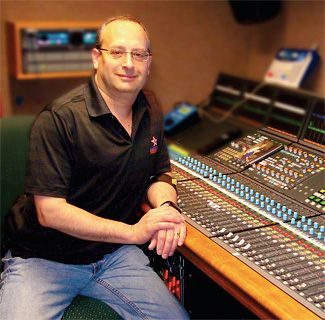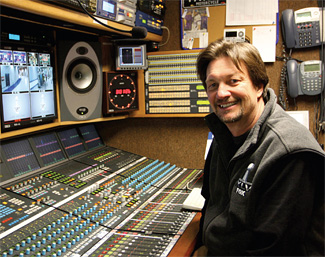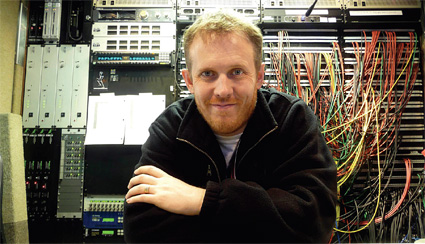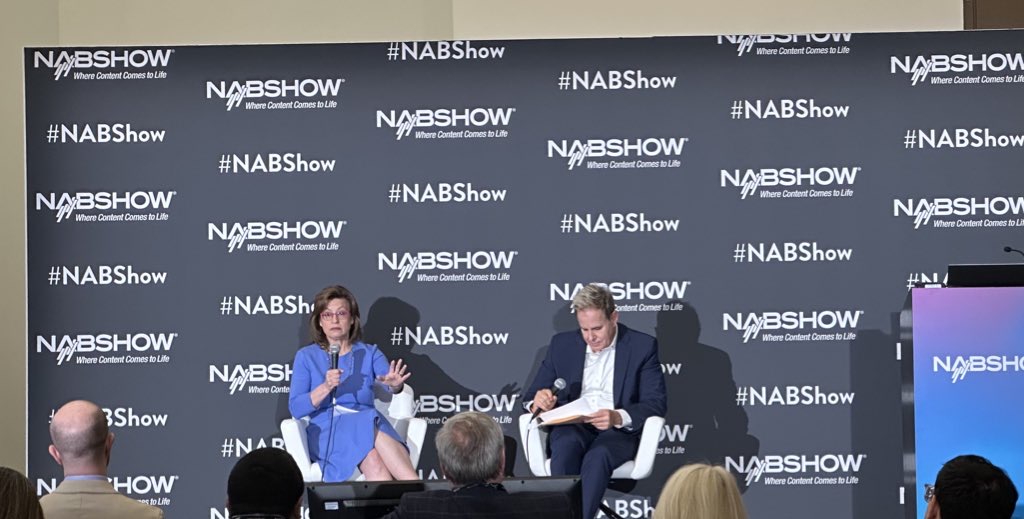HD Tips & Techniques: Front and Center for 5.1
LOS ANGELES—The center channel is undoubtedly the most important element of the 5.1 mix for any televised sports event, indeed, for any programming. But nearly three years into full-time digital broadcasting in the United States, there are two schools of thoughts on its appropriate use.
Of course, listen to any sports events and there is likely to be only one thing in the center channel: the announcers. "As far as CBS is concerned, all they want there is the dialog, period, end of story," said Phil Adler. "You have to make sure the announcer is at least 6 dB hotter than everything else. The networks pay a lot of money to their announcers; they expect the announcers to be heard clearly."
DIVERGENCE BLEED
Even so, Adler, a freelancer who works football and college basketball games for CBS during the relevant months of the year and also mixes some HBO boxing matches, has experimented with his mix. "I have played around with divergence to get the center channel to bleed out a little bit to left and right," he said.

Phil Adler, freelance audio mixer Unfortunately the engineers at master control didn't appreciate his efforts, so Adler stopped the practice. But he stands behind the underlying reasoning.
"My theory is that most people at home don't have a center channel speaker the same size as their left and right speakers. If you put a little bit of the commentary in the left and right speakers, which are more or less full range, then some of that low end and chest and body that male voices have would get sent to those speakers. It would just make them easier to hear." It would also help spread out any ambience bleeding into the announcers' mics, he noted.
Dave Grundtvig, an independent mixer who works events such as the NBA All-Star game and post season MLB games, has also tried divergence, but got pushback from viewers. "During the telecast, people will turn down or unplug the center channel because they enjoy just the ambience and the effects," he said. "We've gotten comments that they're still hearing dialog in the left and right speakers."
Veteran mixer and former recording engineer Fred Aldous, who has mixed a variety of sports and is well known for his pioneering work on NASCAR coverage, has helped turn that phenomenon into a feature. "I'm very fortunate to have a chairman, David Hill, that has been the big push behind the audio at Fox [Sports], he said. "When we first put together NASCAR in 2001, he felt that we did such a great job with the sound that he created a segment called 'Crank It Up,' which highlights the sound of the track, and the announcers layout. I'm able to do some things that I can't do when the announcers are in there because I don't want to bury them. It's kind of like the guitar solo."

Fred Aldous, veteran mixer and former recording engineer'IT'S COMPLICATED'
Michael Nunan, post sound supervisor, CTV in Canada, is a fierce advocate of the second school of thought. "Here's the bumper sticker: the front of the room in 5.1 is not stereo with an extra loudspeaker for dialog," he said. "If something is happening on the screen, that sound must—in whole or part— come out of that center channel or you're missing the point. Way too much 5.1 is done following the exact opposite of that," said Nunan, a driving force behind the creation of discrete 5.1 audio for CTV's original programming, which includes Olympic Games coverage in English and French.
"It's tough, it's miserable, it's complicated, and it means you've got to relearn everything you think you know about trusting what your ears are telling you," he continued. "But it's the only way to make the mix stable for the audience, for the broadcast environment, so that anybody downstream, no matter how they are listening, is going to get something that's sensible."
In fact, the positioning of field effects such as the crack of the baseball bat or the football referee in the phantom center and the introduction of upmixed stereo elements into a voice-only center channel environment is likely to lead to complications. "The primary purpose for me to upmix stuff when I have a production piece is to extract the dialog and keep it in the center channel," said Aldous. "Unfortunately, what happens in playback pieces is not only do we have our dialog in the center channel, we tend to get elements from upmixing in the center channel as well."

Michael Nunan, post sound supervisor for CTV With most of the audience still watching on stereo, even mono, TV sets, mixers need to be mindful that excessive phantom center or surround channel levels can adversely affect the downmix. "Any time you have a stereo playback you have sum and difference, obviously. The sum will come out phantom, the difference will come out left-right on top of whatever you've already got in your center channel," said Aldous, who mixes the announcers at least 6 dB and up to 14 dB above everything else.
Burying the announcers in the downmix through excessive surround levels is a common novice mistake, said Grundtvig. "The simple rule is that everything in the back is going to end up forward somewhere along the line."
Dedicating the center channel to the announcers is all well and good, commented Nunan, but what happens when they stop talking? "Now you can drive a truck through the middle of the room and all of the sound is coming from the outside."
As an experiment, said Nunan, mixers should route their commentary group to a surround channel, have an A2 run the desk, and listen to the mix from elsewhere in the room. "You're going to be left with the idea that not only are you undercooking the center channel, but you're also under-representing the stuff that you want in the center channel," he predicted.
"We don't mean to do this, but we're hiding a whole lot of absence in our mixes behind the commentators."
Get the TV Tech Newsletter
The professional video industry's #1 source for news, trends and product and tech information. Sign up below.
Steve Harvey began writing for Pro Sound News and Surround Professional in 2000 and is currently senior content producer for Mix and a contributor to TV Tech. He has worked in the pro audio industry—as a touring musician, in live production, installed sound, and equipment sales and marketing—since November 1980.
